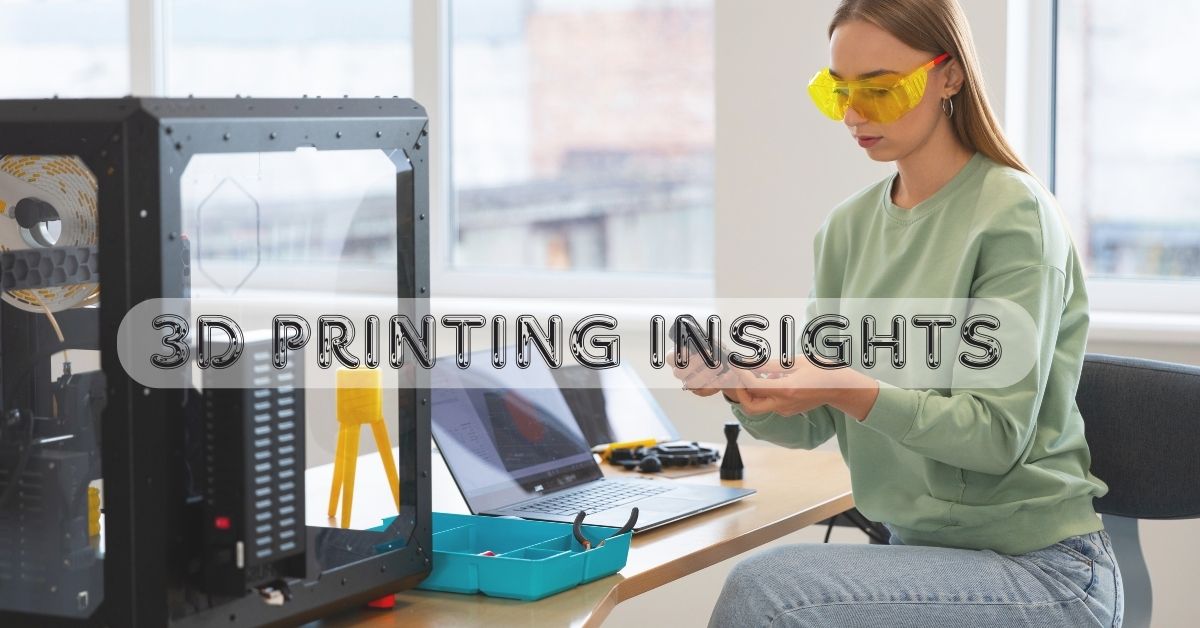In an era of unexpectedly evolving technological landscape, 3D printing insights have turned out to be vital for industries seeking to innovate and streamline manufacturing. From healthcare to manufacturing, 3D printing offers exceptional opportunities for personalization and performance. By diving into key traits and information-driven 3-D printing insights, companies can stay ahead of the curve, optimize their workflows, and reduce charges. In this article, we will explore the latest 3D printing insights that will provide valuable guidance for making informed decisions.
Definition and Overview 3D Printing
3D printing, also known as additive production, is a system that creates three-dimensional gadgets by layering materials based totally on virtual fashions. This era has disrupted traditional manufacturing techniques, providing versatility and innovation throughout various industries.
Brief History of 3-D Printing
The idea of 3D printing emerged inside the Eighties, when Chuck Hull invented stereolithography (SLA). Over the decades, the generation has evolved, becoming extra handy and finding programs in several sectors, from healthcare to automotive.
You May Also Like: Nissan K24 Propane Engine Idle Circuit: A Comprehensive Guide
The Rise of 3-d Printing in Modern Manufacturing
Today, 3-d printing is at the forefront of the producing revolution. It is not only a prototyping device; businesses now use it for stop-product creation, making an allowance for faster production cycles, decreased fees, and stronger product customization.
How 3-d Printing Works
Understanding Additive Manufacturing
At its core, 3d printing insights s an additive system. Unlike conventional manufacturing techniques that regularly contain slicing or subtracting cloth (together with machining), three-D printing provides fabric layer with the aid of layer until the final item is complete.
Layers and Materials Used
Each layer in 3D printing is a thin move-phase of the item being created. Common substances used encompass plastics (like PLA and ABS), metals, ceramics, and even organic substances in superior bioprinting techniques. The desire of cloth depends on the software and preferred residences of the cease product.
Different Types of 3-D Printing Technologies
- Fused Deposition Modeling (FDM)
FDM is one of the most popular and available 3D printing techniques. It works by way of extruding thermoplastic material via a heated nozzle, which then cools and solidifies layer by layer. This approach is broadly used for prototyping and hobbyist programs. - Stereolithography (SLA)
SLA became the first 3D printing generation ever advanced. It makes use of a UV laser to treat liquid resin into solid gadgets. SLA is understood for generating extraordinarily targeted and smooth surfaces, making it best for applications that require precision, consisting of dental and medical gadgets. - Selective Laser Sintering (SLS)
SLS uses a laser to sinter powdered material, which includes nylon or metallic, into stable layers. This technique is favored for commercial programs due to its capability to create long-lasting, complex parts without the need for support structures at some point of the build procedure.
Applications of 3-D Printing Across Industries
- Healthcare and Bioprinting One of the most thrilling trends in three-D printing is its software in healthcare. From printing custom prosthetics and dental implants to developing bioprinting technologies that create tissue scaffolds, the scientific discipline is leveraging 3-D printing to beautify patient care.
- Aerospace and Automotive Manufacturing
Both the aerospace and car industries have embraced 3-d printing for its capability to provide lightweight, robust, and complex elements. For example, organizations like SpaceX and Boeing use 3-d printing to create components that reduce standard weight and enhance fuel efficiency. - Consumer Goods and Prototyping
3-D printing is broadly used for prototyping in customer goods. It permits corporations to quickly create and test product designs earlier than transferring to huge-scale production. Nike and Adidas, for instance, use 3-D printing to prototype shoe designs, improving their capacity to innovate quickly. - Architecture and Construction
In architecture and construction, 3-d printing is pushing barriers. Large-scale printers at the moment are used to assemble whole homes with concrete, decreasing labor costs and creation time. The ability for growing low-cost housing solutions via three-D-published homes is mainly promising.
Advantages of 3D Printing
- Customization and Flexibility One of the biggest benefits of 3-D printing is its capability to create tremendously custom-designed merchandise. Whether it’s a clinical implant tailored to a selected patient or a uniquely designed product for purchasers, the ability of 3-D printing allows for one-off creations and small-batch production runs that could be expensive with conventional manufacturing.
- Cost-Effectiveness and Waste Reduction
Traditional production often results in full-size cloth waste. 3D printing, by means of comparison, is an additive technique that uses most effectively the fabric vital for the object, resulting in minimum waste. This makes it a more sustainable option in lots of instances, reducing the overall environmental footprint of manufacturing. - Speed and Efficiency in Production
three-D printing hastens the production system by means of reducing the time needed to create prototypes and stop products. This pace is specifically beneficial for industries like aerospace and cars, wherein fast iteration can lead to large advancements in design and capability.
Limitations and Challenges of 3-D Printing
- Material Limitations
While three-D printing offers an extensive variety of material alternatives, it still lags behind conventional production in terms of fabric variety and overall performance. For instance, the energy of 3-d-revealed metal parts won’t but suit that of historically manufactured additives in all cases. - High Initial Setup Costs
Although the expenses of 3D printers have reduced, high-cease business machines and materials can still be prohibitively pricey for small organizations or individuals seeking to adopt the generation. - Legal and Ethical Considerations
The upward thrust of 3-d printing raises numerous felony and moral questions, particularly around intellectual property rights. As human beings can now mirror designs quite simply, manufacturers are grappling with troubles associated with piracy and unauthorized manufacturing.
The Future of 3-D Printing
- Innovations in Materials
As studies into 3-D printing materials continues, we are likely to look the improvement of recent, more long-lasting, and flexible materials. For example, the continued exploration into biocompatible substances may want to lead to breakthroughs in organ printing, dramatically changing the future of healthcare. - Advancements in Speed and Precision
New technology, which include continuous liquid interface manufacturing (CLIP), are pushing the bounds of 3d printing insights speed. These improvements will make 3-d printing even more efficient and accurate, allowing it to compete with conventional production on large scales.
The Role of AI in 3-D Printing
Artificial intelligence (AI) is an increasing number of being incorporated into three-D printing structures, helping to optimize designs, expect disasters, and enhance overall manufacturing performance. AI can examine large quantities of records to pleasant-song printing methods, leading to extra reliable and constant effects.
3D Printing in Space Exploration
NASA and other space businesses are already experimenting with 3-D printing to be used in area. The capacity to print equipment, gadgets, or even habitats on demand in space might be a game-changer for lengthy-term missions, reducing the need to send components from Earth.
Conclusion
In conclusion, 3d printing insights is reworking industries throughout the globe, offering unheard-of opportunities for personalization, innovation, and sustainability. While there are nevertheless demanding situations to conquer, the future appears shiny for this innovative era. As it continues to evolve, we are able to count on even more thrilling packages in fields like healthcare, aerospace, and beyond.
FAQs
How does 3D printing differ from traditional manufacturing?
3D printing is an additive process that builds objects layer by layer, whereas traditional manufacturing often involves subtracting material, such as cutting or machining.
What are the environmental impacts of 3D printing?
3D printing typically produces less waste than traditional manufacturing methods, making it a more environmentally friendly option in many cases.
What materials can we use in 3D printing?
The most commonly used materials include plastics like PLA and ABS, metals, resins, and, in some advanced cases, biological materials for bioprinting.
What is the future potential of 3D printing in healthcare?
The future of 3D printing in healthcare is promising, with possibilities including bioprinted organs, customized prosthetics, and even 3D-printed pharmaceuticals.





















